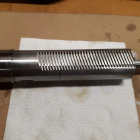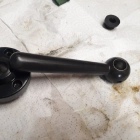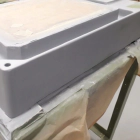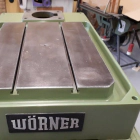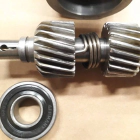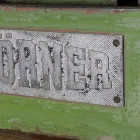The Wörner quill is again on the drilling press. After being completely cleaned and disassembled, the quill rack was touched up to correct the damage that probably was made while assembling the pinion some time ago. Main bearings were replaced by a new ones. Old ones have a suspicious mark that suggest they are no plain 6006 deep grove bearings. GMN redirected me to the spanish contact Berkomat and they concluded that class P4 6005 bearings would be the right replacement.
